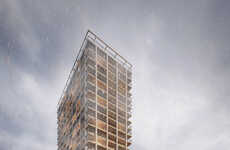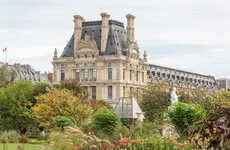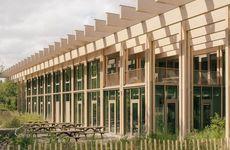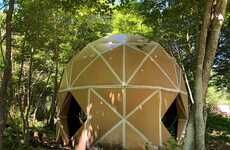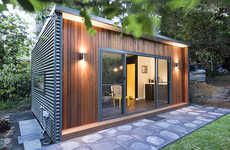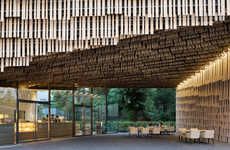
Shigeru Ban Builds a Permanent Structure in Europe
Jamie Danielle Munro — May 26, 2014 — Art & Design
References: shigerubanarchitects & designboom
This paper pavilion is one of the first permanent pieces of architecture from Shigeru Ban. The architect is known for putting up temporary buildings all around the world, from China to Thailand. Many of his designs are for people in need, as he makes the most from recycled materials. As such, this design is a step away from his usual work.
The paper pavilion is in France at the Domaine de Boisbuchet, where he worked with students to put the entire piece together. The pavilion will be used by Ban as an office, so he is able to take a break from working in Paris at the Pompidou. Having this ability to take a break and escape from one's usual workspace can help with creativity, which is especially important in Ban's line of work.
Photo Credits: designboom, shigerubanarchitects
The paper pavilion is in France at the Domaine de Boisbuchet, where he worked with students to put the entire piece together. The pavilion will be used by Ban as an office, so he is able to take a break from working in Paris at the Pompidou. Having this ability to take a break and escape from one's usual workspace can help with creativity, which is especially important in Ban's line of work.
Photo Credits: designboom, shigerubanarchitects
Trend Themes
1. Temporary Architecture - Exploring the potential of temporary architecture to provide innovative and sustainable solutions for various needs.
2. Recycled Materials - Discovering new ways to repurpose recycled materials in architecture and design projects.
3. Creative Workspaces - Recognizing the importance of creating inspiring and flexible work environments to enhance creativity and productivity.
Industry Implications
1. Architecture - Exploring how architectural design can incorporate innovative and sustainable practices.
2. Construction - Investigating the use of recycled materials in construction projects to reduce waste and environmental impact.
3. Creative Industries - Recognizing the value and impact of creative workspaces in industries such as architecture, design, and advertising.
1.2
Score
Popularity
Activity
Freshness



